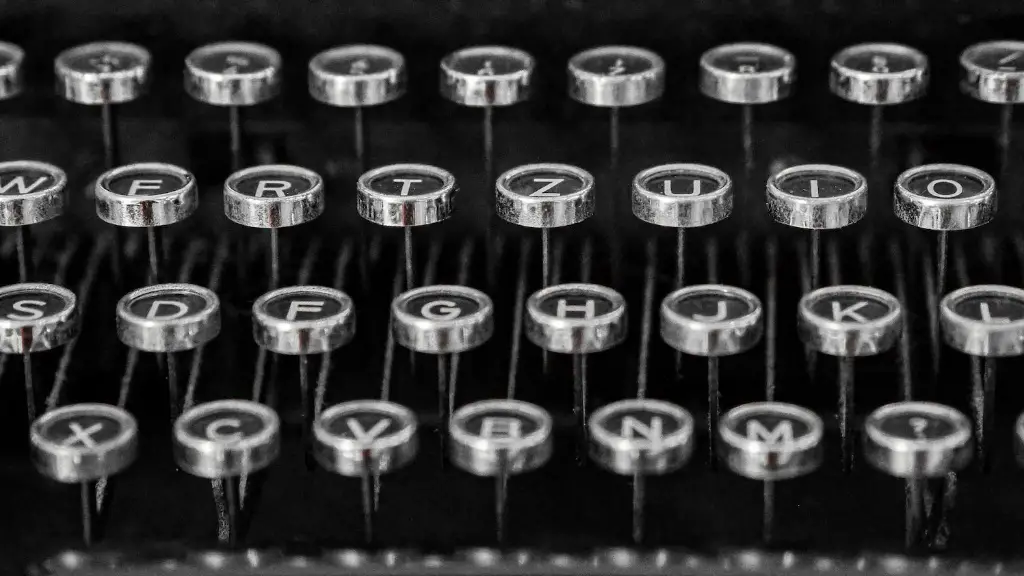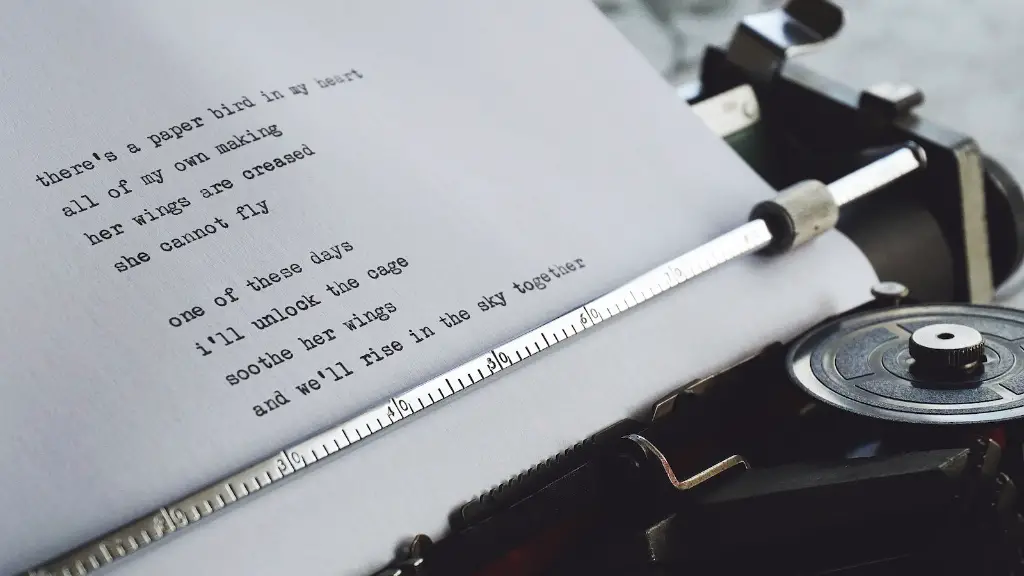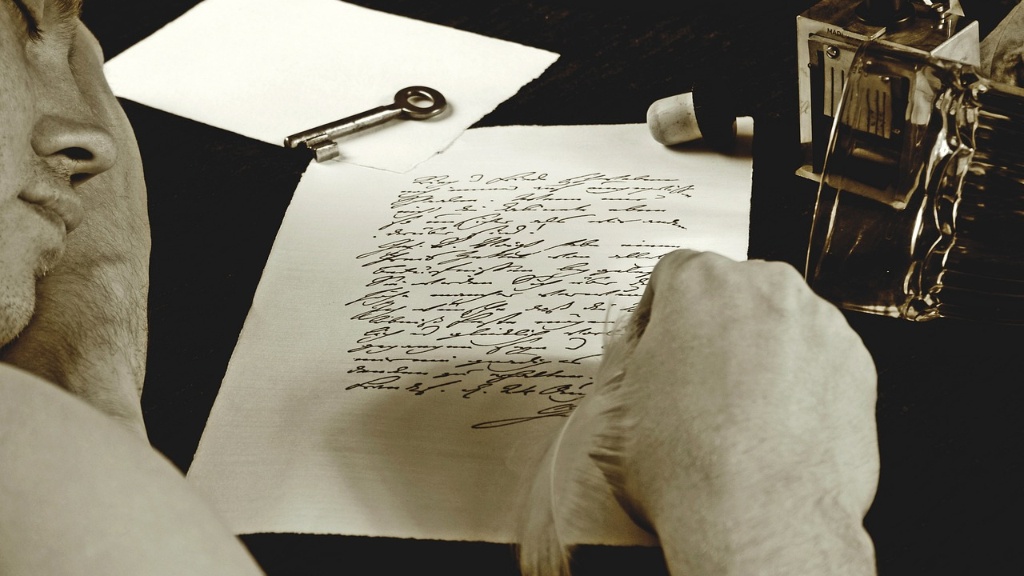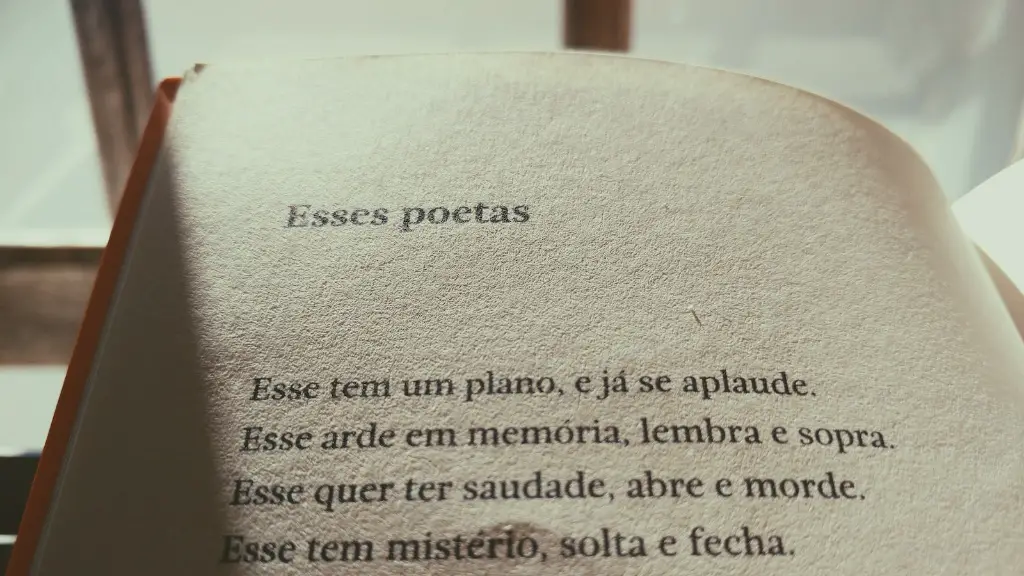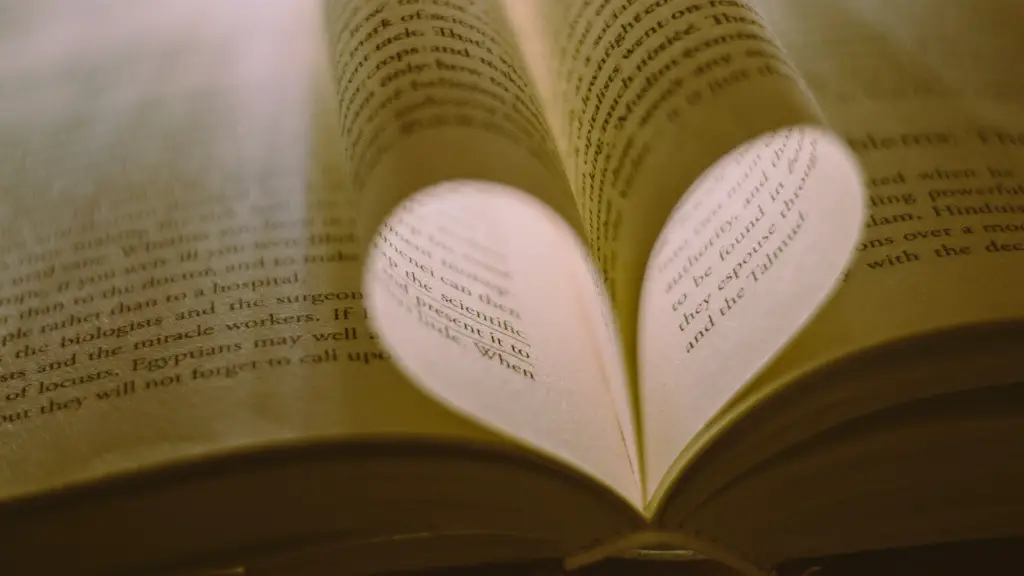The debate of whether rap is a form of poetry has been ongoing for many years. Is rap merely a form of entertainment, or can it be seen as an art form? Scholars have analyzed the subject from all angles, discussing the musical and lyrical complexity of modern rap compositions and comparing these with the work of prolific poets. It is clear that rap has many of the hallmarks of poetry, though not every artist uses it to the same effect.
One thing that can be said with certainty is that rap is at least an overlapping art form. Rap music often relies heavily on rhyme, meter and other poetic devices, often to powerful effect. What’s more, the rhythmic, melodic structure of rap makes it easy to draw parallels with traditional poetry. One of rap’s earliest pioneers, Grandmaster Flash, famously said, “rap is a form of poetry, but I believe it is more than that,” and many have echoed this sentiment.
Modern rap is much more than meaningless lyrics – there are a number of rappers who have achieved great success thanks to their thought-provoking, literate lyrics. The most notable example is Kendrick Lamar, whose intricate lyricism and concept-driven songs make him a favorite among rap fans and English professors alike. Furthermore, Lamar’s rhymes are as complex and creative as any work by a prior generation poet.
Yet, there are some pointed questions that need to be addressed. For example, can rap really be seen as a form of literature? Rap does not have the same structure and syntax as a traditional poem, and for some criticism, this can be seen as a detriment. Rap critics have argued that rap is certainly structured differently than novels or plays, but that does not make it lesser than those forms – it just reflects the way rap naturally developed.
Another concerning issue is whether or not rap has the capacity to move people like traditional poetry does. There is no doubt that rap can be emotionally charged; some of the greatest hip-hop tracks of all time have made listeners laugh, cry, and even dance. Rick Rubin, legendary rap producer and founder of Def Jam Recordings, has said, “Rap is able to touch people in the same way that poetry can.”
The debate over whether rap is a form of poetry is a complex one and is unlikely to ever be answered definitively. For now, it can be said that rap is, at the very least, an overlapping art form that borrows elements from both genres of music and literature. Ultimately, only the individual listener can decide if they appreciate rap as a complex art form or merely see it as a form of entertainment.
History of Rap
The origin of modern rap is said to have begun in the late 1970s, when DJs in New York City began mixing uninterrupted rhythm and rhyme together for the first time. DJs, such as DJ Kool Herc and Grandmaster Flash, would lay down the foundation for rap by spinning old funk, soul, and disco records for their break-dance parties. This new form of musical expression quickly caught on and spread to other cities, becoming known as hip-hop.
Rap began to take on a life of its own in the early 1980s, and soon the streets were flooded with cassette tapes of upstart rappers freestyling over beats. While it was accepted as a form of art in many urban neighborhoods, rap was largely dismissed as a passing trend by mainstream audiences. But by the late 80s, rap had become a phenomenon, with acts like NWA and Run-DMC topping the charts and performing in stadiums across the country.
Rap has continued to evolve ever since then, taking on many different forms. Before the early 2000s, rap was defined by catchy hooks and poppy production. But since the turn of the millennial, the genre’s sound and lyrics have become much darker and more political, with rappers like Kendrick Lamar drawing on a wide range of influences from jazz and funk to soul and spoken-word poetry.
Pros and Cons of Rap
Like any art form, rap has both positive and negative aspects. One of the most obvious benefits of rap music is its ability to express ideas, stories, and observations that wouldn’t otherwise be expressed in a traditional format. This can be especially true for underprivileged or politically marginalized communities, who can use rap as a way to communicate problems and create solutions.
However, the most prevalent forms of rap are often criticized for containing too much explicit content, glorifying violence and promoting negative stereotypes. Many rap tracks exhibit materialistic values and encourage listeners to focus on self-gain. Furthermore, there is a good deal of misogynistic, homophobic and racialized language in some rap lyrics which is further perpetuating damaging stigmas and attitudes.
Although, it is worth noting that there is also a large number of rap artists who use their celebrity platforms to promote positive messages and express socially conscious ideas. These artists try to avoid problematic themes and encourage listeners to engage constructively with the issues of today.
Using Rap for Inspiration
In the years since rap has become a popular art form, it has had an inspiring effect on many poets, and vice versa. Rap artists have often used the same elements of traditional poetry and literature in their songs and have even been known to namecheck poets in their lyrics. Robert Frost, Walt Whitman, and Langston Hughes are all name-dropped by rap greats such as Eminem, Tupac, and Kendrick Lamar.
Rap has also provided inspiration to dozens of slam poets and spoken-word artists. Artist like Black Ice, Saul Williams, and Beau Sia have all been inspired by rap and have paid homage to the genre in their work. They have demonstrated the ability for poetry to still have the same emotional impact when delivered in the style of rap.
It is also worth noting that even the most critical academic observers of rap have drawn inspiration from the genre and used it to craft their own works. Author Kevin Coval and academic Eve Ewing are two of the most prominent intellectuals who have written extensively on the influence of rap and hip-hop culture on their own lives, careers, and works.
Difference between Rap and Poetry
Although rap and poetry share many common elements, there are also many differences. For starters, rap tends to focus more heavily on rhythm than traditional poetry, and the tempo and cadence of rap verses are generally much faster than a traditional poem. Furthermore, rap verses often include more complex syllable structures than traditional verse.
The other major difference between these two art forms is that rap is mainly lyrical and vocal in nature, whereas poetry can be performed a cappella or accompanied by instruments. Rap is largely based around the beat and the energizing rhythms of the drums, whereas poetry is less constrained in terms of sound and often consists of a single, vocal performance.
Conclusion
The debate over whether rap is a form of poetry will undoubtedly continue for some time, but one thing is for sure: Rap has had a big impact on literature and poetry. The genre has been able to make an imprint on both spoken-word and written works, offering something unique and alternative to traditional literature. Even if rap is not a direct forebear of traditional poetry, it is certainly an artistic inspiration with an influence that should not be overlooked.
